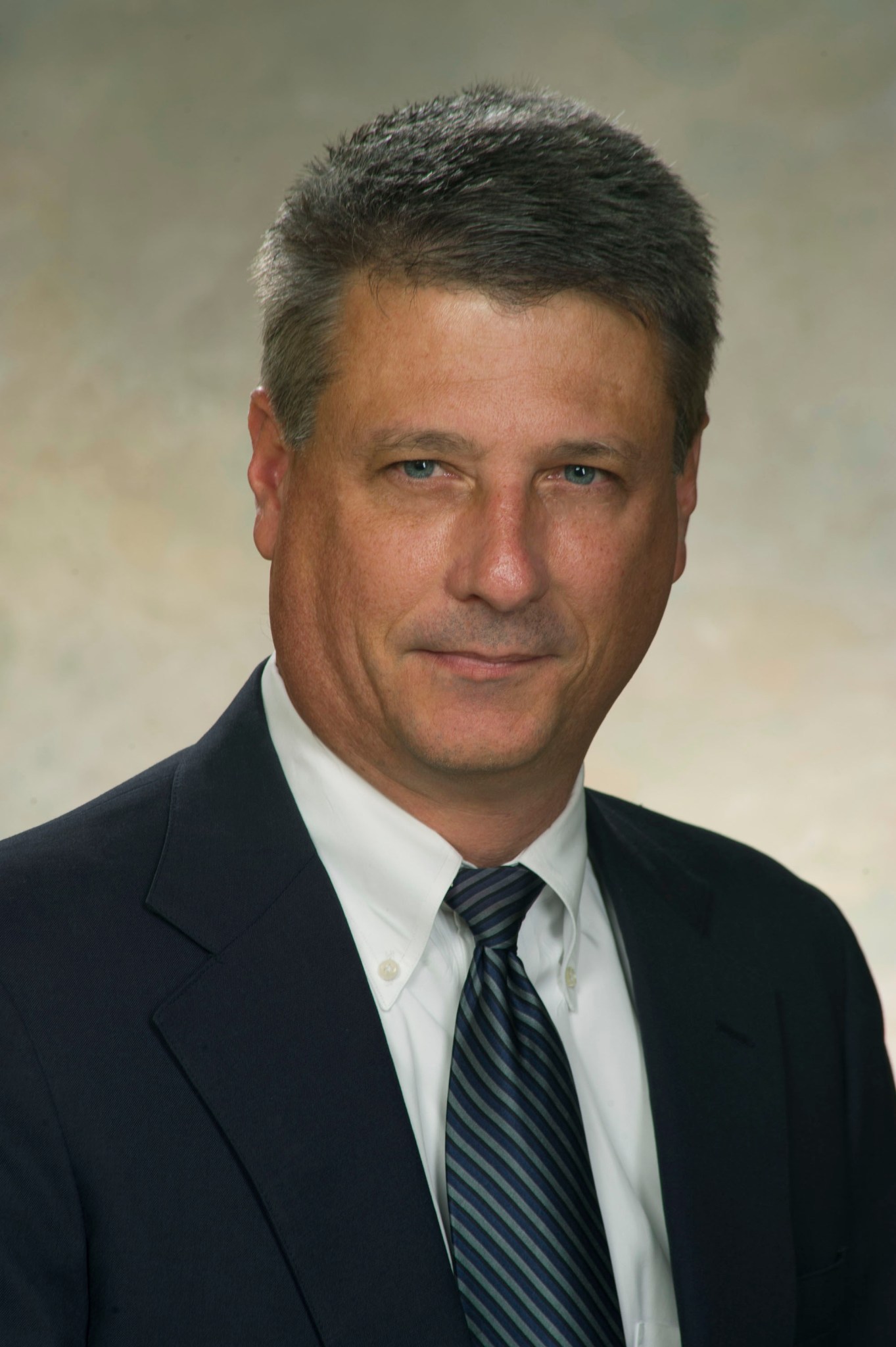In This Week’s Star
- Marshall Alloy and Its Inventors Inducted into Space Technology Hall of Fame
- Marshall Hosts NASA’s First Gateway All-Hands
- Chris Cianciola named SLS Program Office Deputy Manager
- On the Move: The People that Make Big Things Happen at NASA
- Marshall Hosts Business Owners At SLS Industry Day
- Marshall Celebrates Asian American and Pacific Islander Month
- This Week in NASA History: Final Flight of Endeavour Lands – June 1, 2011
Marshall Alloy and Its Inventors Inducted into Space Technology Hall of Fame
By Will Bryan
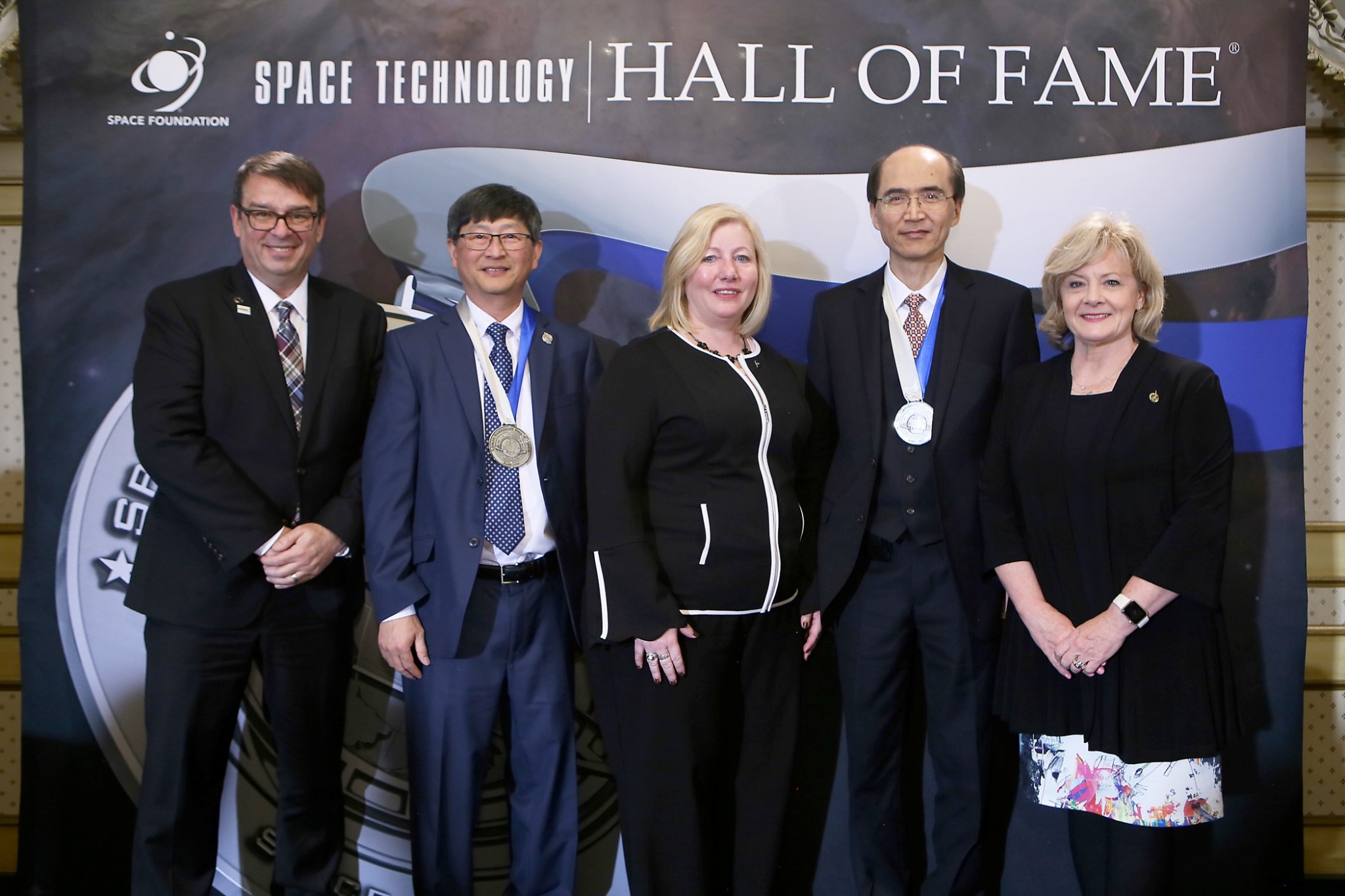
Making metal alloys can sometimes seem like baking. A little bit of “this,” a dash of “that;” mix it up, heat it and let it cool for that perfect sweet treat or metal alloy. Small amounts of different ingredients can make a big impact on the flavor of your cake or the strength and characteristics of your metal.
At NASA’s Marshall Space Flight Center, there are many “bakers” of materials, and two of those alloy creators, Jonathan Lee and Po Chen, were inducted — along with their alloy, NASA 398 — into the Space Foundation’s Space Technology Hall of Fame during the 34th annual Space Symposium in Colorado Springs, Colorado, on April 19.
“The induction of the NASA 398 alloy into the Space Technology Hall of Fame means that our innovation has been recognized worldwide as one of the life-changing technologies to significantly improve the quality of life on Earth for all humanity,” Lee said.
The Marshall Center and Sammy Nabors, manager of Marshall technology licensing and commercialization, were also recognized, as was Bombardier Recreational Products Inc. of Valcourt, Quebec, Canada. Over 700,000 Bombardier boat engines contain the lightweight, high-strength aluminum alloy developed at Marshall.
The creation of NASA 398 started in 1993 when Lee and Chen were involved in the Partnership for Next Generation Vehicles, also known as PNGV. The goal at the time was to create a lightweight alloy for combustion engine pistons capable of withstanding high temperatures and pressures to enable the engines to run more efficiently with reduced emissions.
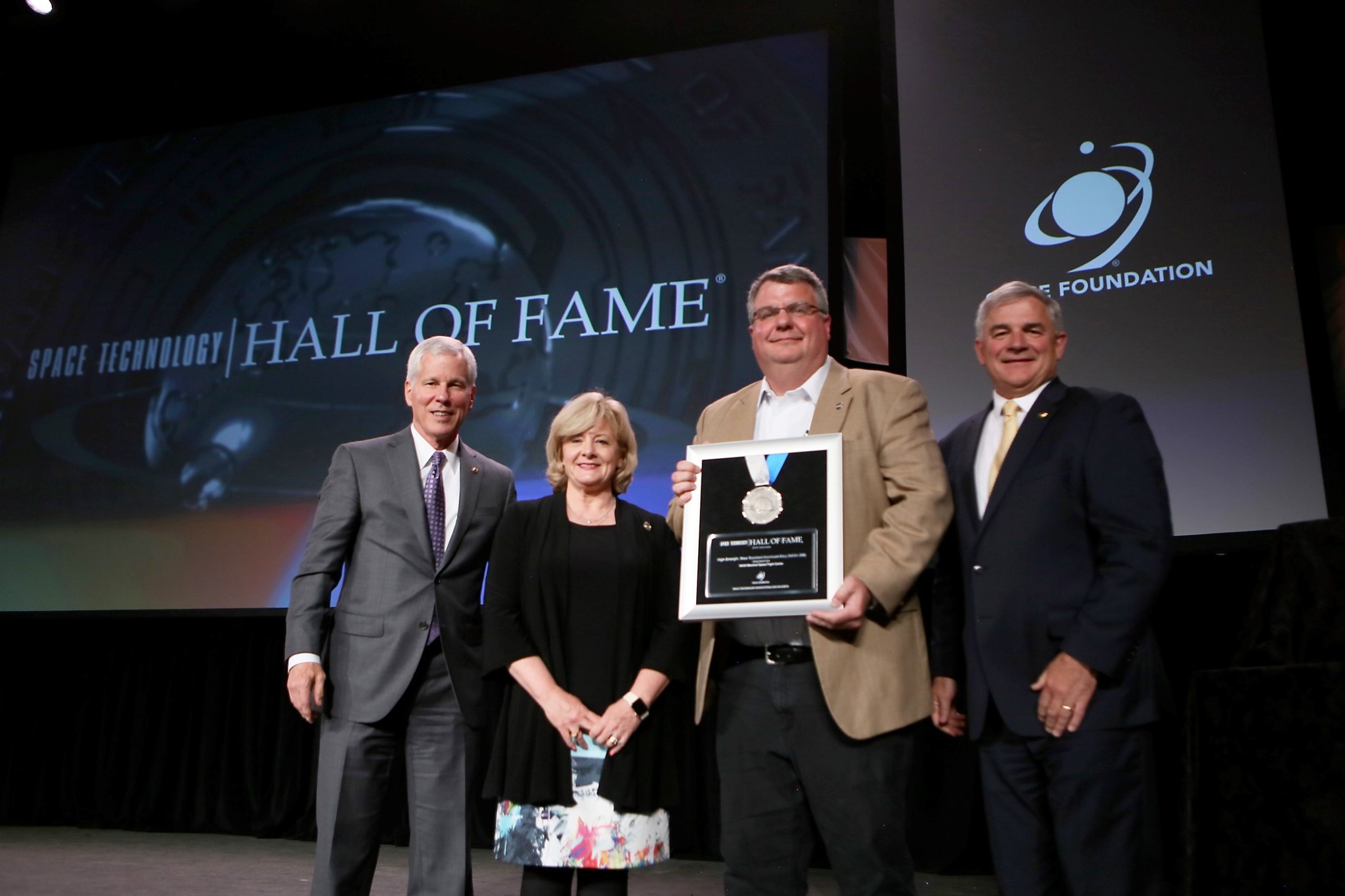
Using aluminum as the base metal, Lee and Chen added small amounts of other elements — including silicon, titanium and vanadium — making the naturally weak metal stronger and more resistant to wear.
“Prior to the PNGV involvement, Dr. Po Chen and I had some experience in developing high-temperature, nickel-based super alloys for NASA’s rocket propulsion hardware,” Lee said. “Naturally, we decided to take advantage of this material design knowledge to create a better aluminum alloy by modifying the compositions from a conventional alloy and its heat treatment process, in order to drastically improve its mechanical properties at high temperatures.”
Once the alloy was developed, tested and patented, the inventors went through the process of commercialization with Marshall’s Technology Transfer Office and Nabors, who set out to find companies interested in licensing the patented technology.
“You have to make industry aware of what is available for licensing,” Nabors said. “NASA has over 1,400 patents available for licensing. It is Technology Transfer’s responsibility to market these technologies to industry partners. One way we do that is participating in conferences and trade shows.”
One company interested in the alloy was Bombardier. Nabors’ efforts to commercialize the technology were recognized by the Space Foundation, and he received a commendation from the organization.
In addition to its use in boat engines, the alloy is a component in large fans for underground traffic tunnels that pull in fresh air during emergency situations. Discussions are taking place to use it in other areas, including in bike components for one of the world’s largest bicycle manufacturers.
The alloy has proven its mettle — currently used in hundreds of thousands of boat engines — and now, along with its inventors, Marshall and Bombardier, has found another home in the Space Technology Hall of Fame.
To learn how you can commercialize your technology, click here.
Bryan, an ASRC Federal/Analytical Services employee, supports the Office of Strategic Analysis & Communications.
Marshall Hosts NASA’s First Gateway All-Hands
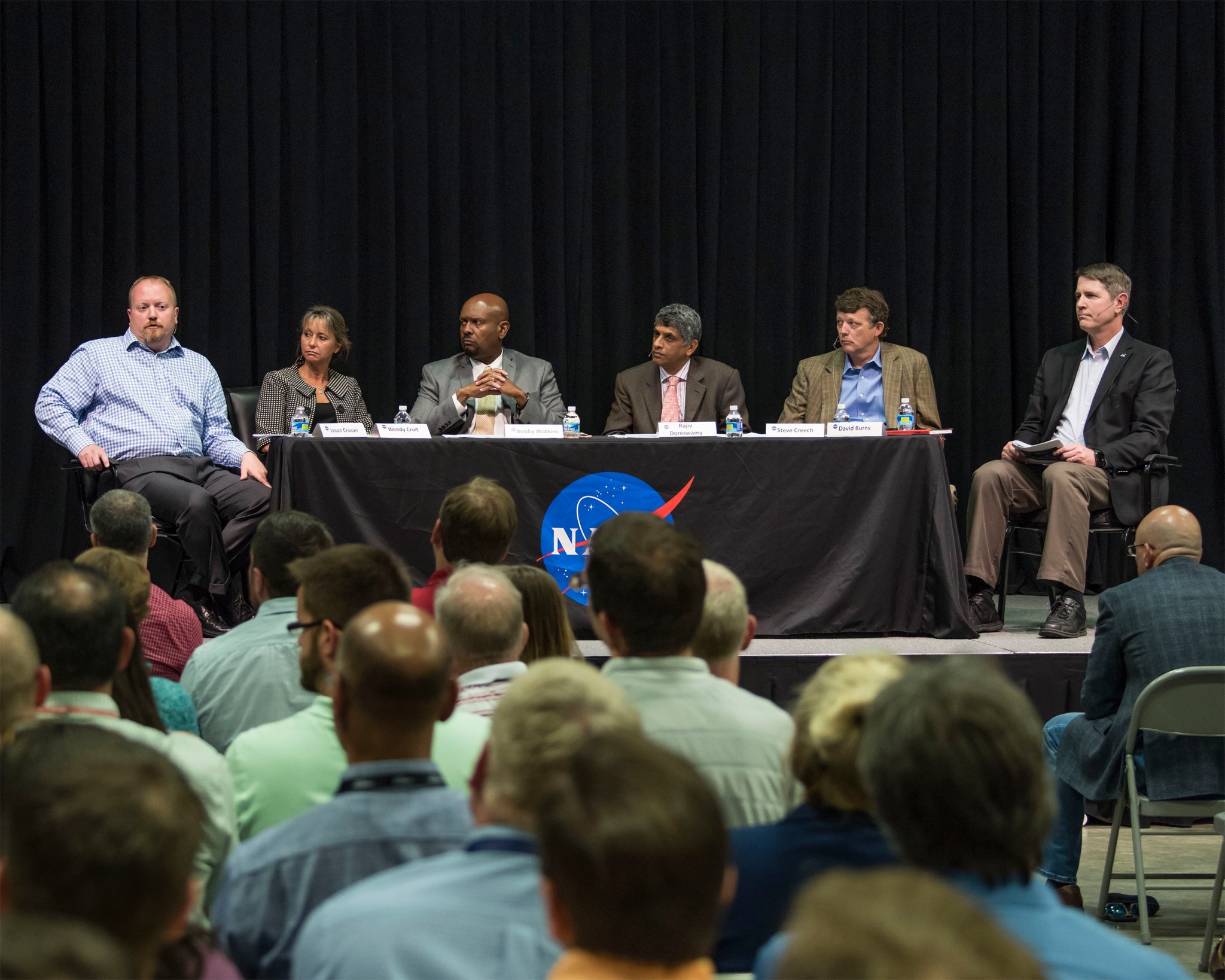
The agency’s first Gateway all-hands meeting was held May 24 at NASA’s Marshall Space Flight Center. The discussion focused on the Lunar Orbital Platform-Gateway, NASA’s architecture for human cislunar operations, lunar surface access and missions to Mars. Together with NASA’s Space Launch System and Orion, the gateway is central to advancing and sustaining human space exploration goals. A panel leading the discussion included Jason Crusan, left, director of Advanced Exploration Systems and gateway formulation lead at NASA Headquarters, along with Marshall directors and managers, continuing from left, Wendy Cruit, Gateway Systems Engineering and Integration Program lead; Bobby Watkins, director of Human Exploration Development & Operations Office; Rajiv Doreswamy, Exploration Transportation and Development Office manager; Steve Creech, Spacecraft Payload Integration & Evolution Office manager; and David Burns, Science & Technology Office director.
Chris Cianciola named SLS Program Office Deputy Manager
Chris Cianciola has been named Space Launch System Program Office deputy manager at NASA’s Marshall Space Flight Center. He will succeed Jerry Cook, who is retiring.
Cianciola will share responsibility for directing SLS Program activities, which will lead to a new U.S. heavy-lift launch vehicle for NASA’s next generation of human space exploration.
An 18-year NASA veteran, Cianciola has served in both technical and management roles at Marshall. Since January 2017, he has been the SLS chief safety officer, responsible for managing and directing the safety program and mission and product assurance activities for the SLS Program.
Cianciola began his NASA career in 2000 as a reliability and quality assurance engineer in Marshall’s Safety and Mission Assurance Directorate, responsible for safety and mission assurance functions for the Shuttle Reusable Solid Rocket Booster and External Tank projects. In 2003, he became External Tank Project SMA team lead, providing technical leadership to safety and mission assurance experts.
Between 2005 and 2010, he was chief safety officer for the Ares Projects Office and the Shuttle External Tank Project. He became deputy manager of the Shuttle External Tank Project in 2010, jointly responsible for leading the final phase of operations, successful and safe completion of the Space Shuttle Program, and transition to the post-shuttle period.
In 2011, Cianciola established and led the Exploration and Space Transportation Development Office, managing Marshall’s activities in support of multiple Human Exploration and Operations Mission Directorate programs. From 2015 to 2017, he was the International Space Station program manager for Marshall Payload Operations, responsible for total cost, schedule and technical implementation of space station payload operations.
In addition to his NASA experience, Cianciola has over 17 years of aerospace industry experience supporting multiple agency programs, providing critical support to payload integration and shuttle propulsion elements.
A native of Memphis, Tennessee, Cianciola earned a bachelor’s degree in civil engineering from the University of Mississippi in Oxford and a master’s degree in administrative science from the University of Alabama in Huntsville. He is the recipient of numerous honors and awards, including the Silver Achievement Medal, Exceptional Achievement Medal, Space Flight Honoree Award, Director’s Commendation and Silver Snoopy.
Cianciola and his wife, Lanell, have two children and reside in Huntsville.
On the Move: The People that Make Big Things Happen at NASA
By Amanda Adams
NASA’s Marshall Space Flight Center is known for making large-scale hardware supporting the nation’s finest space exploration missions, but moving the assembled articles is no easy task. To get the job done, a team of engineers from all across Marshall’s Engineering Directorate work together to design and manufacture a system of transporters and custom hardware called Ground Support Equipment that attaches to NASA’s Space Launch System core stage hardware and moves the super-heavy articles from place to place.
The core stage flight and test articles for SLS must be moved to various NASA centers for testing and assembly with other components and eventually to the launch pad at NASA’s Kennedy Space Center. Because the equipment is custom-made to the flight hardware specifications and must be delivered before the test articles are completed and ready to be moved, the team worked on a tight timeline to stay ahead of the core stage deliveries.
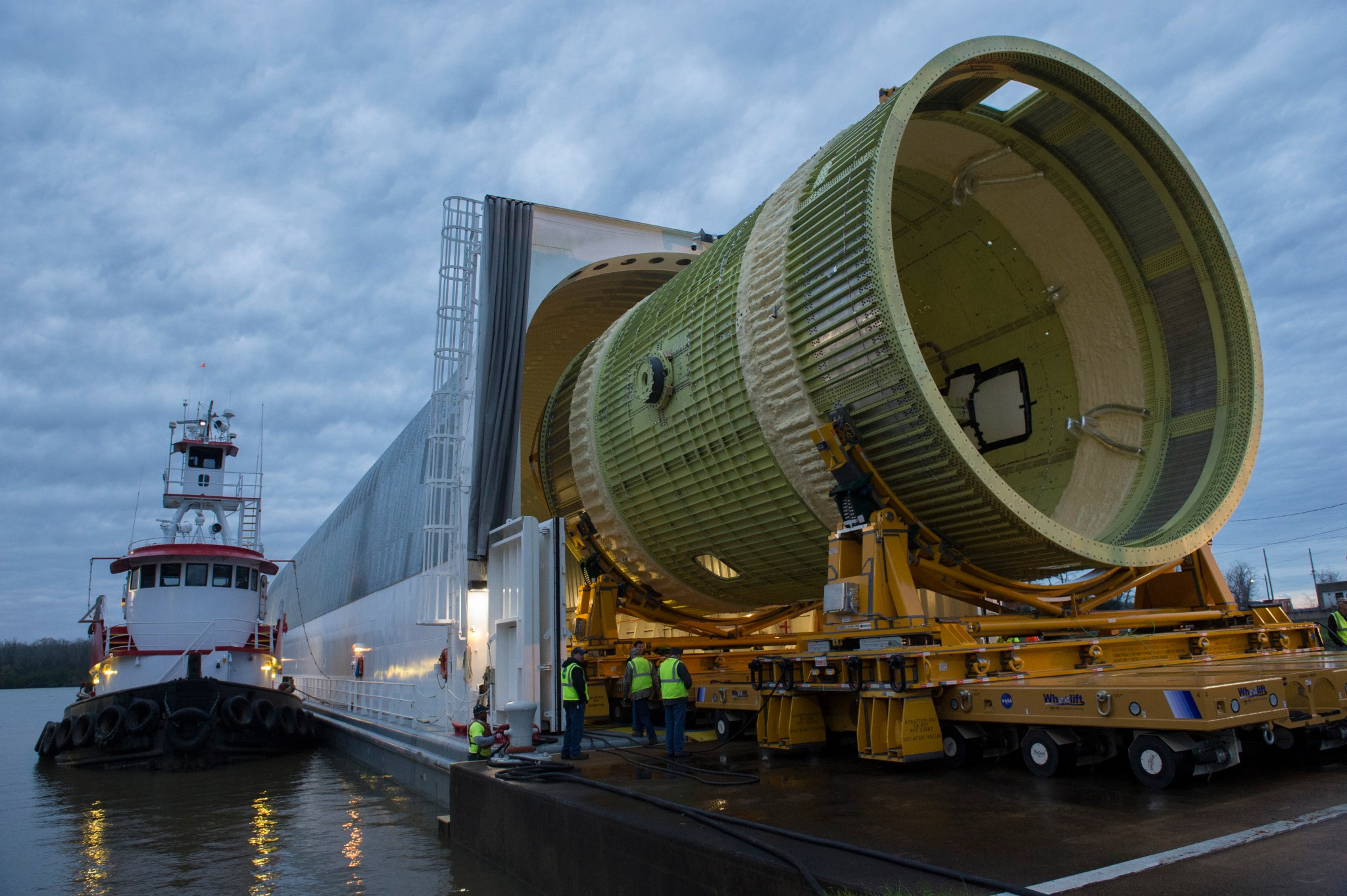
“The biggest challenge that we have is being the last to know our requirements and the first to deliver our product,” said Shane Carpenter, engineering manager for the Stages Ground Support Equipment team at Marshall. “While we were building our products, the flight articles were also being designed, so we had to be flexible and make last-minute changes as the flight hardware design matured.”
Since the ground support equipment has interface with and transport the actual flight and critical rocket hardware, each piece of ground support equipment must be built to, and meet or succeed, the same stringent specifications and requirements. The system includes self-propelled modular transporters that serve as the wheels behind the operation, common hardware interface structures that attach directly to the flight or test article and lifting hardware that lifts the article into the test stands. While the custom interfaces are designed specifically for SLS components, the transporters themselves are versatile and will continue to move articles for NASA for years to come.
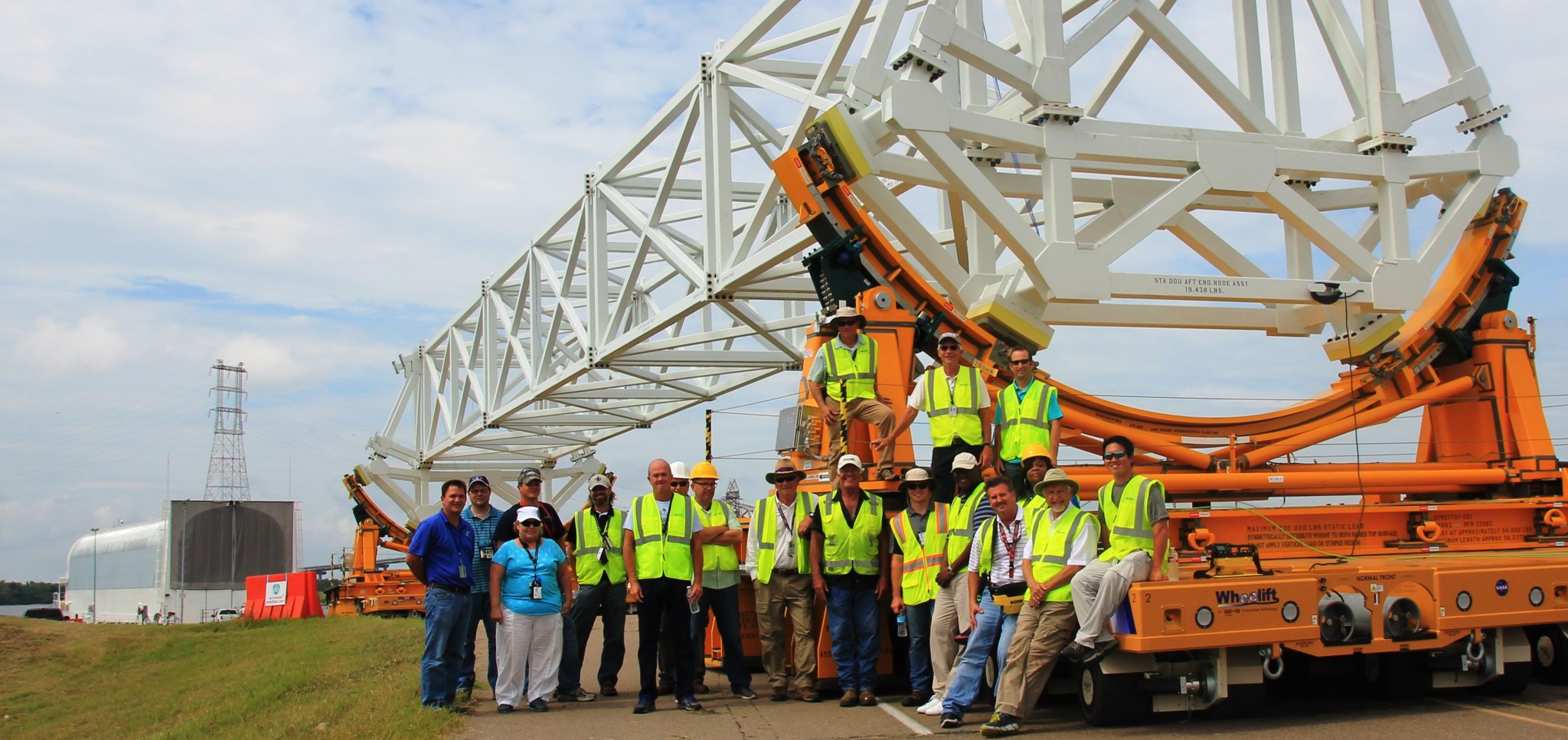
“One of the biggest morale boosters is to see your project go from start to finish and then actually see the hardware in action, moving these large rocket parts over both land and water,” said Carpenter.
Marshall was chosen to build the ground support equipment for the core stage because of the center’s experience designing and building the same type of equipment for the space shuttle. Its unique materials laboratory and large fabrication facilities provide the center the ability to build large structures. Because of this capability, the team at Marshall sees this hardware from design to implementation.
“This team had the pleasure of seeing their project move from the concept, through design to production and ultimately to implementation,” said Larry Leopard, deputy director of Marshall’s Engineering Directorate. “They’ve worked tirelessly for the past four years to meet their deadline and move us forward in our mission to explore deep space.”
Recently, the team was able to see its handiwork in action when NASA’s barge Pegasus delivered the SLS intertank test article to Marshall for structural testing. The intertank connects the liquid hydrogen and liquid oxygen tanks and is the main attach point for the rocket’s powerful solid rocket boosters. “There’s a sense of pride in seeing your work perform an integral function and do it well,” said Chip Walraven, lead systems engineer for the Ground Support Equipment team at Marshall. “We started our preliminary design in 2015. It’s shocking the first time you see the final product in real life when you’ve been seeing it on paper for years. It’s much bigger than you realize. It gives you chills to see it come together.”
The team is in the final stages of testing and integrating the ground support systems for the core stage and its mock-up, the pathfinder, for SLS.
Adams, an ASRC Federal/Analytical Services employee, supports Marshall’s Office of Strategic Analysis & Communications.
Marshall Hosts Business Owners At SLS Industry Day
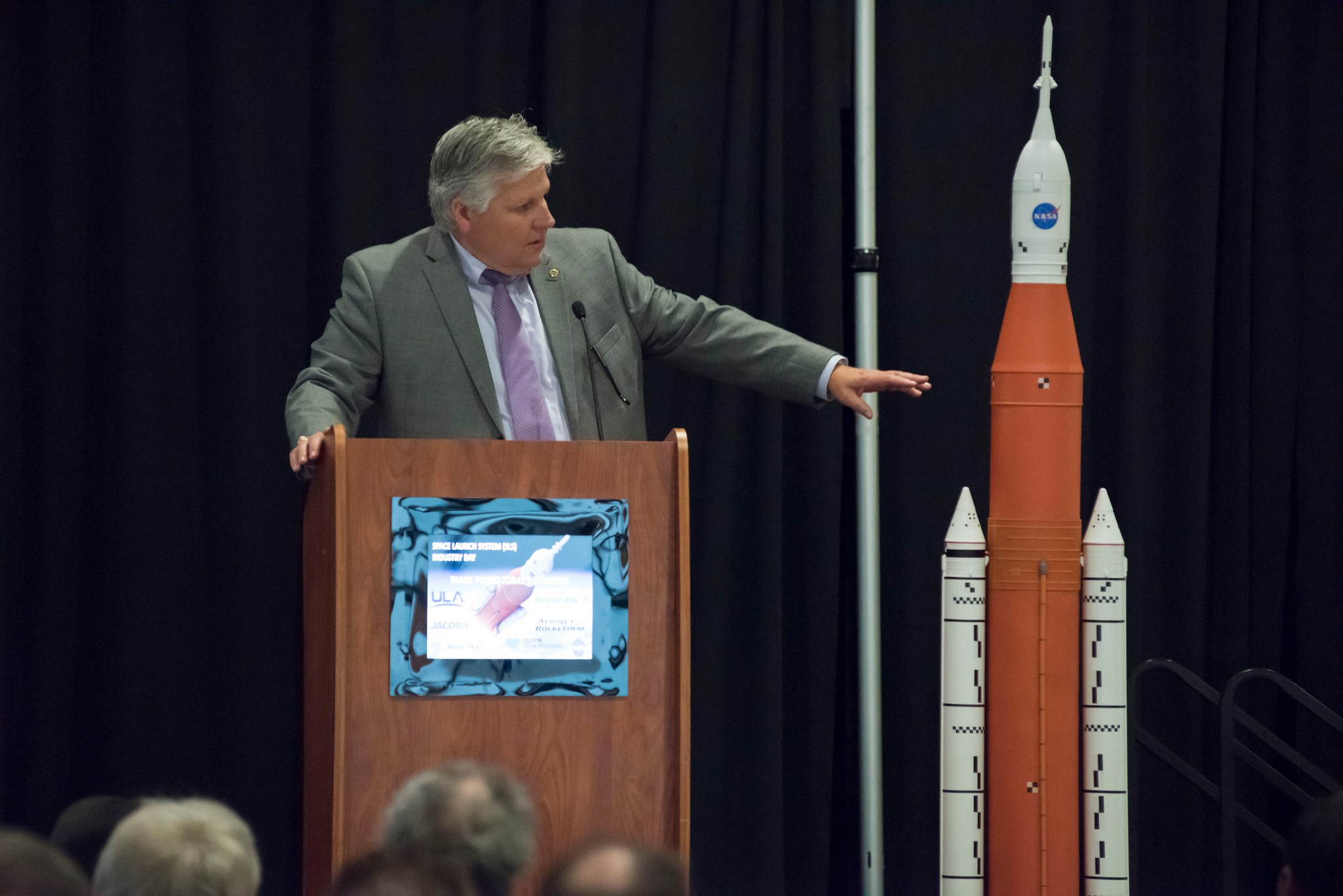
Jim Turner, a manager for NASA’s Space Launch System stages office, discusses business opportunities building the agency’s deep-space rocket. More than 400 business representatives from large and small businesses, as well as prime contractors and subcontractors, attended an industry day May 22 — hosted by NASA’s Marshall Space Flight Center — to learn about the latest NASA contract opportunities. Small business owners were able to talk to SLS managers and prime contractors at the event to learn about opportunities for working on the SLS rocket that will send astronauts to the Moon and beyond. More than 1,100 companies from 44 states, including many small businesses, are helping to build SLS.
Marshall Celebrates Asian American and Pacific Islander Month
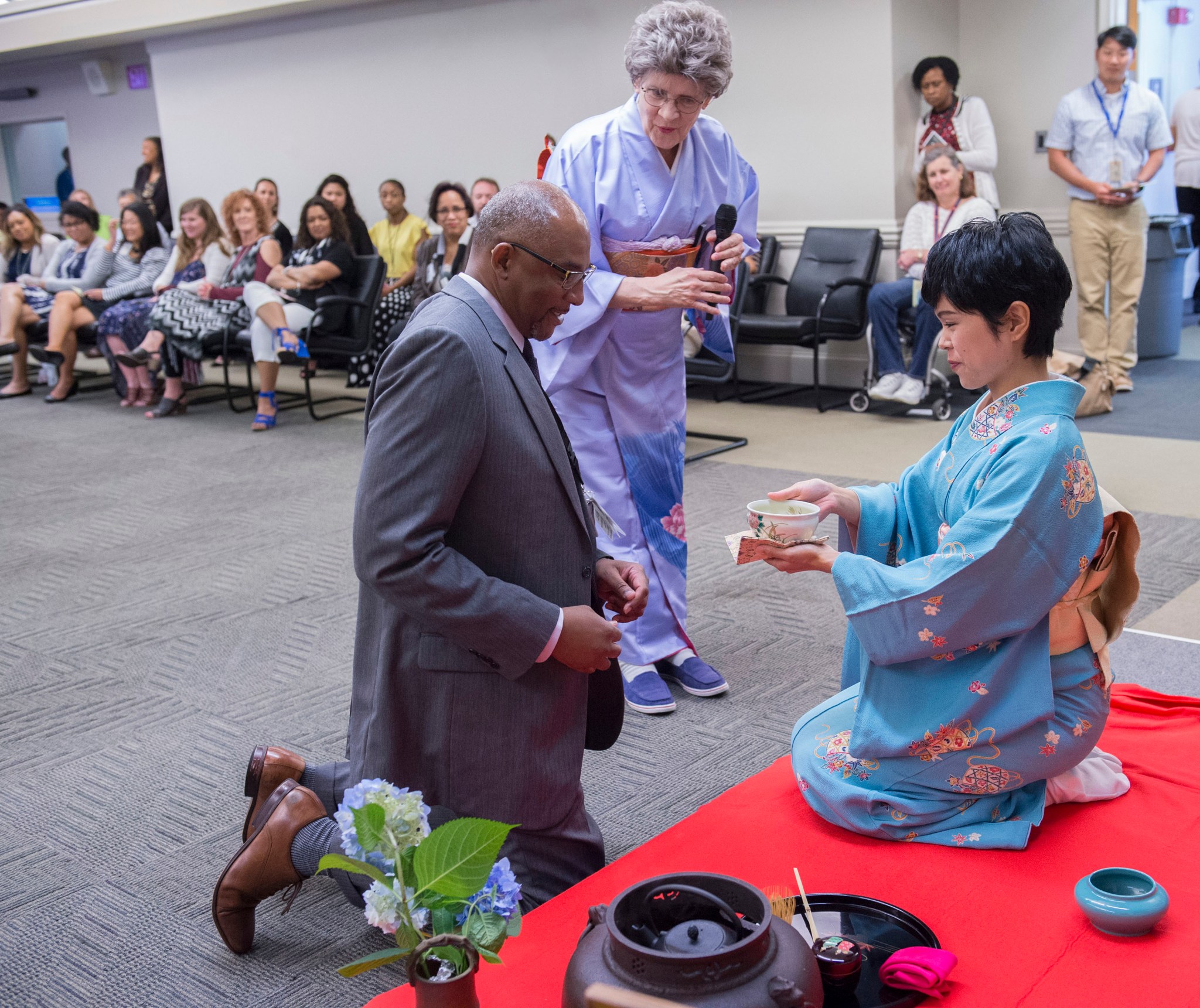
Loucious Hires, left, director of the Office of Diversity and Equal Opportunity at NASA’s Marshall Space Flight Center, is offered tea during a Japanese tea ceremony narrated by Dani Richards, center, and prepared by Mai Kimoto, right — part of Marshall’s Asian American and Pacific Islander Month celebration May 22. The event was organized by the Diversity and Equal Opportunity office.
This Week in NASA History: Final Flight of Endeavour Lands – June 1, 2011
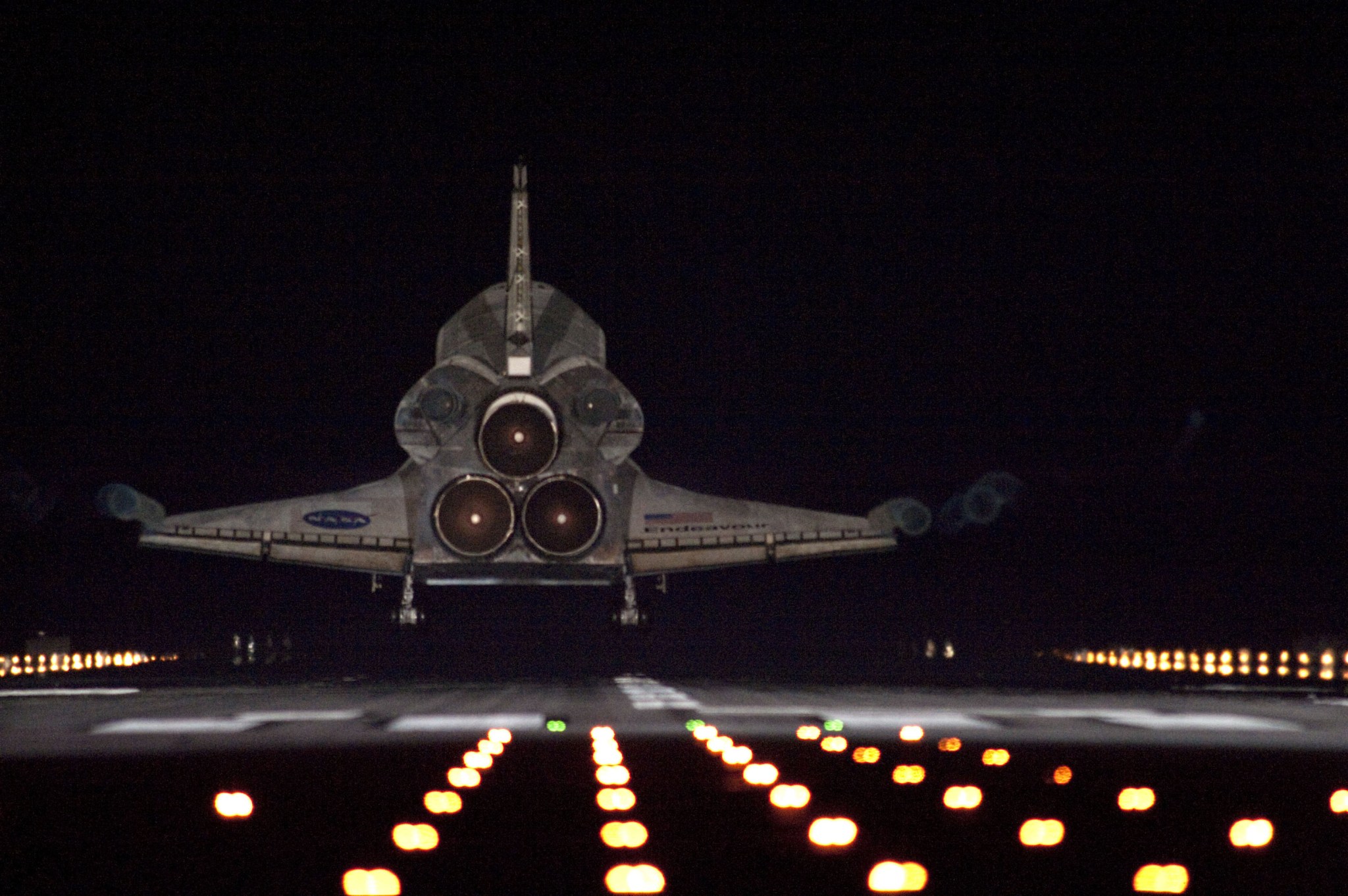
This week in 2011, space shuttle Endeavour, mission STS-134, landed at NASA’s Kennedy Space Center following a successful 16-day mission to deliver the Alpha Magnetic Spectrometer and spare parts to the International Space Station. This was the final flight of Endeavour. Today, the Payload Operations Integration Center at NASA’s Marshall Space Flight Center serves as “science central” for the space station, working 24/7, 365 days a year in support of the orbiting laboratory’s scientific experiments. The NASA History Program is responsible for generating, disseminating and preserving NASA’s remarkable history and providing a comprehensive understanding of the institutional, cultural, social, political, economic, technological and scientific aspects of NASA’s activities in aeronautics and space. For more pictures like this one and to connect to NASA’s history, visit the Marshall History Program’s webpage.


























